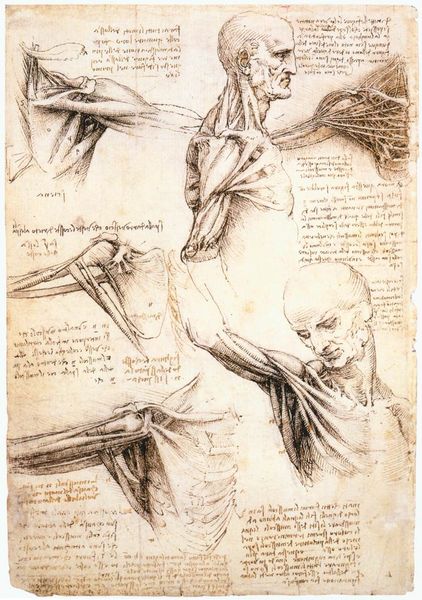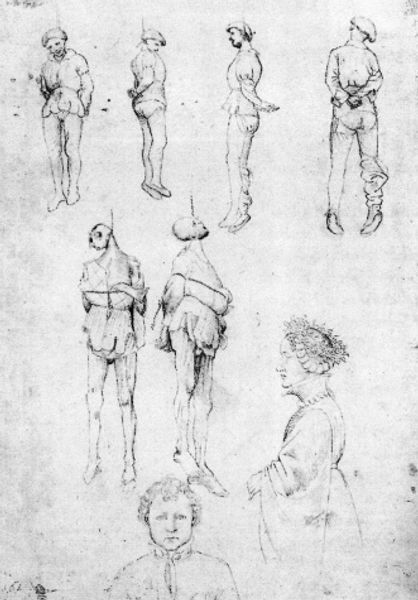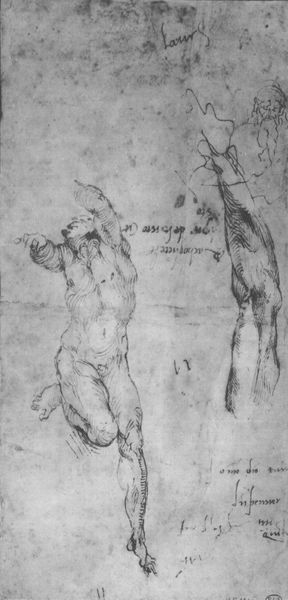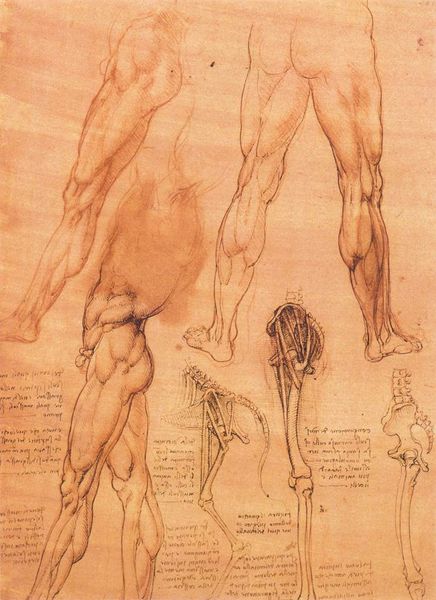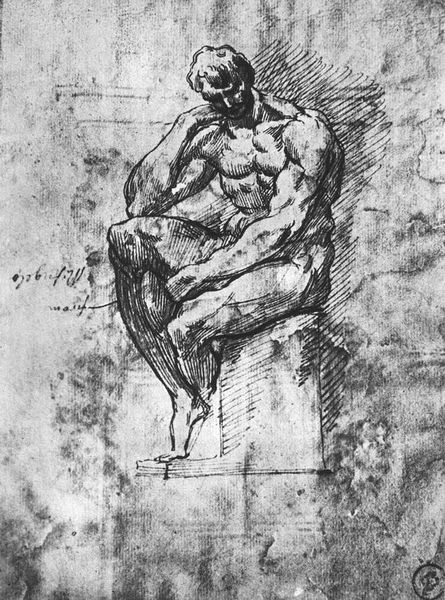
drawing, ink
#
drawing
#
amateur sketch
#
thin stroke sketch
#
pencil sketch
#
incomplete sketchy
#
form
#
text
#
11_renaissance
#
ink
#
idea generation sketch
#
sketchwork
#
detailed observational sketch
#
pen-ink sketch
#
rough sketch
#
human
#
line
#
academic-art
#
italian-renaissance
#
nude
#
realism
#
initial sketch
Copyright: Public domain
Curator: Welcome. Today, we’re exploring Leonardo da Vinci’s "Anatomical studies (larynx and leg)," a drawing rendered circa 1510, using ink on paper. Editor: It has a strikingly immediate feeling. The detailed leg juxtaposed with the sketch-like quality of the larynx study really captures the process of understanding the body as a working object. Curator: Precisely. This sheet exemplifies Leonardo's relentless pursuit of knowledge, blending art and science in a way that challenges the power structures of the time, particularly concerning access to knowledge and the human body. We often forget dissection was heavily policed. Editor: It's important to acknowledge that the ink he’s using would have been handmade, maybe from oak galls, that gathering, preparing, and application being labour-intensive. This focus shifts our consideration, from divine creation towards material construction. Curator: I find it revealing how Leonardo’s anatomical studies challenge prevailing conceptions of the body, pushing against traditional representations that often marginalized women's bodies and perspectives on health. He questioned those visual regimes. Editor: Look closer: it’s fascinating to consider how the texture and density of the ink vary. See how da Vinci exploits that, achieving shading and depth. We understand process and the transformation of materials through use of particular tools. It speaks of consumption through close observation. Curator: Indeed. And while we look at that line quality, let's consider how the detailed leg becomes more than an objective representation, but an idealised masculine form, which raises questions about whose bodies are worthy of anatomical investigation and artistic portrayal. Editor: Seeing that detail, one gets an appreciation of what was available, the instruments that gave this precision – whether crafted metal, specific acids, the support of other makerly bodies… we also can consider the trade relationships that allow these tools. Curator: To me, it underlines the role of anatomical drawing in challenging visual hierarchies and paving the way for medical education for future generations. It's about social mobility and resistance through images. Editor: For me, that’s less present; but my eye still finds an incredibly considered example of skillful practice and process. Thanks for pointing out the power dynamic, a new awareness for me to consider alongside the artistic. Curator: And for me, examining materiality always informs context!
Comments
No comments
Be the first to comment and join the conversation on the ultimate creative platform.

